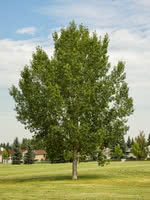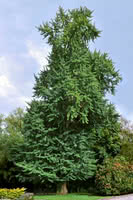Mon-Fri 9am - 5pm Mountain time
Northwest Poplar vs Ginkgo Biloba
Populus x jackii Northwest
Ginkgo biloba
NOT AVAILABLE THIS SEASON - MIGHT RETURN
Northwest Poplar is a large and fast-growing tree. Due to its wide spread, this tree makes a great shade or shelterbelt tree. Northwest Poplar tolerates partial shade, drought, and most types of soil. This poplar produces no fuzz.
Northwest Poplar continues to be popular as a shelterbelt species due to the great cost savings that come from the wide spread of the branches. It is a staff favorite because of the wonderful shade it provides all summer long.
The Ginkgo Biloba is regarded as one of the most distinctive and beautiful of all the deciduous trees, and has remained genetically unchanged for millions of years. Its beautifully fan-shaped leaves develop a clear yellow colour in fall. Graceful and attractive year-round, Ginkgo is the perfect conversation starter in your yard.
Northwest Poplar Quick Facts
Ginkgo Biloba Quick Facts
Toxicity: Uncooked nuts in large quantities
In row spacing: 2.4 - 3 m (8 - 10 ft)

